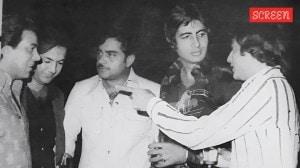The third way
Slowly but surely,transgendered people are being acknowledged by the documents of citizenship.
Starting with the first formal enrolments in Puducherry,the Unique Identification Authority of India (UIDAI) has now included T for transgender,alongside the male and female categories. Little by little,the state and its enumerating instruments have begun to widen their lens,and recognise the separate identity of those who do not fit the conventional taxonomy or choose not to. Until recently,they have lived in a kind of legal limbo,deprived of many of the rights granted under civil law like the right to vote,marry,possess a ration card or driving licence,as well as health and employment benefits. And much of this stemmed from the tyranny of forms that provided only two options male or female. And these forms matter,because they are the set of documents that recognise and constitute formal citizenship. It goes without saying that they have been the victim of deep prejudice and social discrimination,even violence.
However,in recent years,sexual minorities in India have banded together to wrest their rights,and have already managed to make serious dents in policy. In 2005,the Centre introduced the E category for eunuchs,in passport forms. The Election Commission includes a category O for others,and the census forms now also acknowledge gender-variant identities.
Putting an accurate number on Indias transgendered people is important. The census presents a snapshot of the population,it determines how benefits flow to various segments,it forms the basis for welfare allocations. The UID,similarly,is going to form the basis of much social policy,and so,apart from the social and official recognition it offers,there will finally be a real estimate of the number of transgendered people.
- 01
- 02
- 03
- 04
- 05































